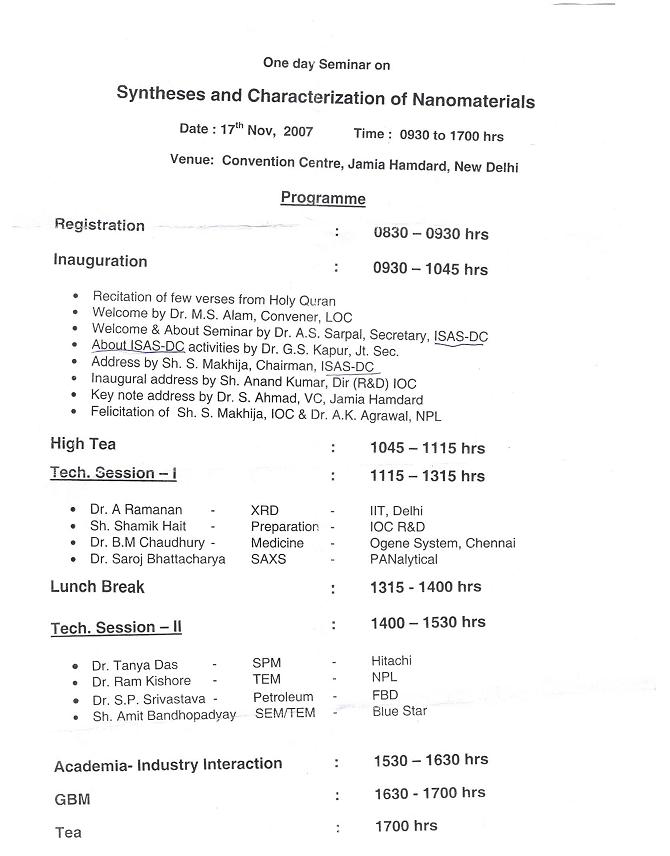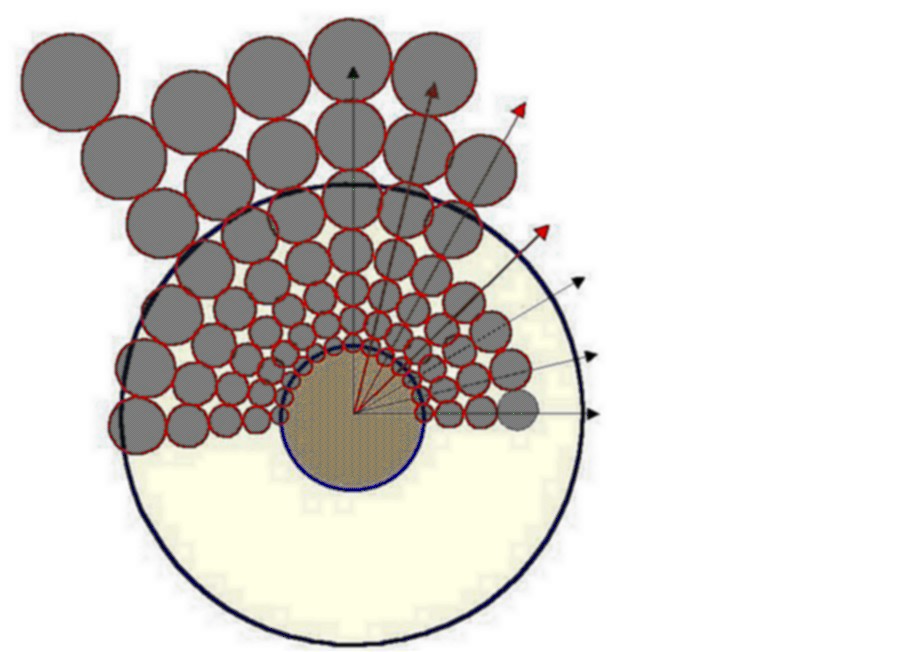|
|
 |
While viewing this site preferably (use
for the viewing preferences) Text Size "Larger" than the medium and set the monitor display for the "Maximum Brightness".If
the text size at larger is inconveniently large for navigating then set it to "Medium"or to "smaller"
For navigating through
the pages(HOME page and subsequent pages #1 to #10)look below at the end of each page the titles of the pages as the runner
underlined and on each title set the cursor and "click".
A webpage of this site https://saravamudhan.tripod.com/id12.html (see
the left side links-panel: "other related webpages")consists
of a list of the contributions in pususance of the title"Explaining the trends of Nuclear Shielding caused by Magnetic moments related to Susceptibilties"
The events which followed after (year
2003) the reports at the above link of "id12.html" are listed and particulars are posted at the tripod site: http://nehuacin.tripod.com/
In order to ascertain the scope of the contents documented in this
page by the author Dr.S.Aravamudhan, the one-day seminar on SYNTHESIS and CHARACTERIZATION of
NANOMATERIALS [organized by Indian Society of Analytical Scientists, Delhi
Chapter & Department of Chemistry, Jamia Hamdard, New Delhi] seemed worth attending on the 17th
November 2007.
CLICK HERE for BROCHURE
-------------------------------------------------
Message to Organizer after the participation
-------------------------------------------------------------
Programme image (click
on image for enlarged view)

----- Original Message -----
Sent: Sunday, November 18, 2007 4:57 PM
Subject: Fw: Accommodation
To the Organizers
Oneday-Seminar ON
Syntheses and Characterization of NANOMATERIALS
Jamia Hamdard, Chemistry
Dear Prof. Alam,
It had been a pleasure being at Jamia Hamdard University, Department of Chemistry on the 17th
November 2007 for theOneday Seminar on Syntheses and Characterization of NANOMATERIALS. While vacating the room at Scholar's
House, I was told about a telephone message which the In-charge of the House received, telling not to collect any charges
from me for my stay in the allotted room during the one-day seminar. As you had told the volunteers at the Registration Desk,
I have been included in the list of persons for Free Registration.
I returned to Shillong on the 18th Nov. 2007 and I send this message informing you about my online registration at the
ISAS website Registration Page for a Life mombership in my favour.To this initiative, I am sending by POST a Cheque for Rs.
770/- (with the break up amounts as: Registration Rs.700/- Rs.20/- admission and Rs.50/- Charges for this being an outstation
Cheque) in Fvaour of the Indian Society of Analytical Chemists.Please duly acknowldege whn the Cheque is received.
I have benefitted by the proceedings of the Seminar, inparticular the technical session II on the Techniques.In fact as
per the contents of my webpage https://saravamudhan.tripod.com/id7.html the information on particle size measurements, and the scttering profiles for the different shapes of particles and the distribution
plots for the measured particle sizes were the informations which I have been wanting to get to know about. In the third Lecture
in the afternoon session it is (probably) Umesh Tiwari who dealt with this and I wish to seek from you Dr.Tiwari's contact
address/ or the other person who answered my query on behalf of the speaker subsequently. My query was on the profiles for
the different shapes indicative of the regular shapes and the possibility of getting profiles for shapes much less regular
and anlysingsuh profiles in terms of the shapes for standard regular shapes, discs, cylinders and spheres. Also whether the
the particle size distribution graph profile is describable in terms of known mathematical functions, and then if the answer
is yes further try to explain why the aprticle size distributions in te prepared system at all have any such mathematical
conformity? Then one can address also the results for different methods of preparatons etc.
Having the impression now about the Jamia Hamdarad Campus and the enterprising resource persons, I wish to express my interest
in contributing to/ participate in any way I can in the events of this type at Jamia Hamdarad and in particular on the aspects
along the lines of the Discussions held on "Academia & Industry Interactions" which turned out to be a refereshing recapitulation.
In this context, I would suggest that some of your faculty who are part of such organizing committee (and list out addresses
of persons whose presence is to be solicited for the different occasions) should peruse the contents of some of my webpages
which inscribe below and provide informations to me on the activities at jamia Hamdard University.
http://nehuacin.tripod.com/
https://saravamudhan.tripod.com/id12.html
http://www.geocities.com/saravamudhan1944/ugc_inno_proposal.html
Convey my regards to Prof. Ahmed, VC Jamia Hamdard who gave us an overview in his keynote address.
With my best regards,
S.Aravamudhan
---------------------------------------------------------------------------------------------
While calculating the induced fields in the various
contexts for a potential application and hence at present still only striving to make sure whether all these efforts do have
much more than the simple academic pursuit of simplifying for better grasping by students (of the point dipole approximations
as tools for explaining quantitaively the chemical shift trends in Chemical Contexts) there seemed an extraneous consideration
of some possibilities that the semimicro volume elements which are being hypotheticaly mooted are really forming themselves
during the handling (preparation or processing the materials)of materials? With this in view some of the features, of the
dimensions and proportions of the mathematically required hypothetical volume elements, have been brought to the notice of
the materials scientists and their opinions are still awaited. A write-up in this context appears on this page.
The illustration below depicts the construction which
is according to the requirements of (small circles with increasing radii along a vector length) semimicro volume elements
to distribute the total susceptibility of the macroscopic specimen among the smaller elements without any loss of the totality
of the magnetized material to ensure the summation resuls the experimentally measured value for the specimen.Since either
by addition or taking only the wholesum material the Susceptibility is the same, when distribution is made to small elements
and for each small element the dipole origin is at the small elemnts' centre. This implies that the entire susceptibility
value does not contribute from the same origin for the dipole magnetic moment. If this distribution into small elements is
not made then for the entire magnitude of Susceptibility only one dipole would be placed at the centre of the macroscopic
sphere (for a spherical sample) where as in the present calculation there are several diplole centres at the centre of each
of thesemmicro (hypothetical) spheres and this difference in one way brings the situation to more close to reality than placing
a single dipole at on Centre. it is this distribution of dipole centres which is also achieved in a continous sense in working
out the integrals.But the integrations restricts the possibke shapes to which these calculations can be extended. In this
present method there is this continuous displacement of the dipole origin is built in,this is achieved by considering that
the numerical criteria require the dipole approximation to be valid.and under this premise the summation procedure can result.

The requirement of a inner cavity in the sample for
such considerations and calculations is all at great length the same as the consideration given for the Lorentz' Cavity Field.
CAN THERE BE NANOSTRUCTURES /PARTICLES CLOSELY PACKED TO REALIZE THE MATHEMATICAL MODEL OF HYPOTHETICAL VOLUME ELEMENTS
IN MAGNETIZED MATERIALS
***************************************
A look-out for structures / particles of magnetized
material as above is a driving force to be seeking to attend WAM-II.
Recently, as can be known from the presentations
of Dr.S.Aravamudhan [contributed to the Annual National Symposia of the Magnetic Resonance Society (NMRS) particularly the
5th at Dehradun in 1999, the 6th at TIFR in 2000 and the 7th at CLRI/IIT Madaras in 2001 with the poster materials contributed
at the XIII International Biophysics Congress,New Delhi (Sept.1999) ] there had been mathematical requirements for considering
a magnetized specimen / materials hypothetically as a closely packed spheres with every (adjascent) sphere bearing a well
defined radius ratio to the preceding & succeeding spheres. This constant radius ratio is applied successively to each
volume element ( spherical) in a definite & systematic arrangement over the entire extent of the material to calculate
the induced fields due to the magnetized specimen.
Do such closely packed nanostructures occur with uniform radii or with
well defined radius ratios (due to the method of preparation for the example) in such away as what has been described as hypothetical
volume wlements in the mathematical modeling. Can such closely packed nanostructures / particles be realized as tangible materials
for the experimental verification of the validity of the equations used by considering actual measurements on these nanostructures
/ particles ?
The context of the spin-echo NMR measurements of field-patterns around spherical glass beads for the understanding
of the effects of susceptibility reagents in membrane- transport studies is a typical example where small spherical specimens
are closely-packed and mesasurements made. Instead of glass beads can a nanostructure material be realized for such considerations
?
Further informations on this context can be obtained from :
1. Prof.S.V.Bhat, Department of Physics, Indian
Institute of Science, Bangalore.
2. Prof. Anil Kumar, Department of Physics, Indian Institute of Science,Bangalore. 3.
Prof. K.V. Ramanathan, Sophisticated Instruments Facility, Indian Institute of Science, Bangalore.
|
 |
|
|
|
|
|
 |

